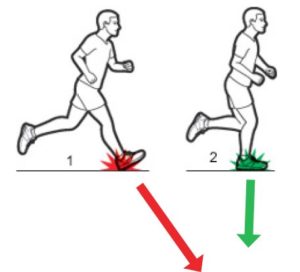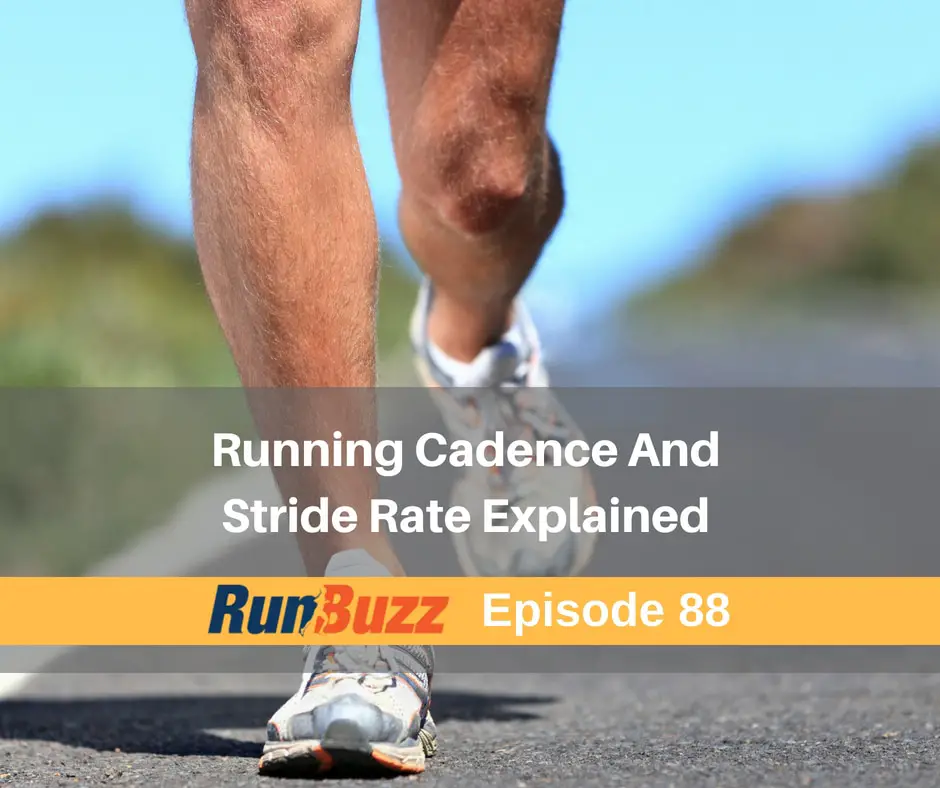In this episode we explore running cadence and how it impacts your running.
Specifically, we will look at what is running cadence and dig into why you should care. We will share some tips on how to calculate your running cadence and how to increase it if needed. Plus we share some popular running apps that will help you analyze your running form. All this and more, coming up on today’s podcast.
Show Notes
Hi guys and welcome to episode 88 of the RunBuzz podcast. Today we will be talking about what running cadence is, and how it relates to your running.
Specifically, we will look at what is running cadence and how it impacts our running. We will dig into why you should care, or should you care. Finally, we will share some tips on how to calculate your running cadence and if needed, some tips on increasing your running cadence which may lead to increased speed and possibly (depending on your situation) decreased injury risk.
All this and more in this episode.
What is running cadence?
Definition: Running cadence (or stride rate) is simply how many strides you take per minute. It is one of many common metrics used to measure running form.
What is the optimal number?
Your height, weight, leg and stride length, and your running ability will determine your optimal cadence. Many will say the optimal running cadence is 180 steps per minute. It isn’t that simple. We are each unique. Despite this, most of us will find our optimal cadence around 170-180 steps per minute.
Why Should You Care About Your Running Cadence?Stride rate and running cadence has a strong correlation to your foot strike and running gait.
Too few strides/min (less than 180ish) may result in a longer stride or heel striking position. Heel strikers are more likely to lock up their knees, and put added pressure on the body potentially causing injury. This usually results in a slower pace.

So if you imagine what your front leg looks like if you are over-striding, your forward leg is out in front of you, your foot out in front of your knee, and it lands heel first, toe up. Now if you were taking a picture and froze your picture in mid-stride like described, you would see your extended leg in this extended position and as it lands, it creates a shock that radiates up your foot, calves, knees, and up through your hips. When repetition occurs like this, it can lead to injury due to the force being transferred up your entire leg (or kinetic chain). For more information about your kinetic chain, please check out episode 80.
So by increasing cadence, you change your foot strike and gait. Shorter strides will land under your hips instead of in front. Your foot will hit the ground midsole, all resulting in quicker leg turnover, less energy wasted, and a body focused on moving forward instead of always having “the brakes on” kind of feeling of leaning back with a heel strike. This brakes-on effect is causing us to lose momentum when we run and requires more energy as we have to push off harder on the subsequent stride to maintain our speed.
Lower cadence is also the result of being in the air longer-a bouncy-looking run. Higher cadence is limited air time, better efficiency.
I once heard someone who was speaking at a race expo, describe how he coached his runners by having them focus on keeping the back foot, as it moved forward, as low to the ground as possible, in order to minimize this bouncy effect and limit air time of the forward-moving foot during the stride. He mentioned that you had to be careful if you play with your form though as it can cause a more shuffling motion if changed too soon as well as create more pressure on the hips (or less pressure in some cases) depending on the person. I thought it was an interesting technique but also found it messed with my form too much.
How To Calculate And Improve Running Cadence and Stride Rate?
Some running watches or run apps allow you to estimate cadence. You can also count your steps. For example, take 30 seconds and count how many times your right foot hits the ground. Then, multiply that number by 4 to get the total number of steps per minute. You could also count the number of times your right foot hits the ground for 15 seconds and multiply that number by 8.
How to increase cadence to improve form and efficiency
A. If your number is low, focus on increasing no more than 5-10% per week. You don’t want to do a huge change right away since your body is not used to it. Any time we mess with something that messes with form, we want to make sure that the change is slow and preferably not in a phase of training where we are increasing distance.
B. Find music with the beat you are looking for, or download a cadence timer/metronome app. Your foot should hit the ground every time it beeps or you hear the beat. Spotify has a station with music for 180 beats/min if you search for it. It may be a little more techno-but may be better than beeping that comes from a metronome.
List of popular songs that have 180 bpm (beats per minute)
Running songs at 180bpmMost Popular Running Songs at 180bpm
List of running apps that can help with running form or cadence.
For a complete discussion beyond these show notes, be sure to subscribe, download and listen to the episode!
Thanks and Happy Running!
- About the Author
- Latest Posts

Steve Carmichael is a running coach, sports performance coach, nutrition coach and has been a recreational runner for over 18 years. Steve holds multiple certifications as a certified running coach through the RRCA and USA Track and Field as well as he is a NASM certified personal trainer, and PN1-L1 certified nutrition coach.
Steve has been coaching since 2010 and has helped thousands of runners online and in the Central Ohio area maximize performance and run injury-free.
Steve is the founder of RunBuzz and Run For Performance.com. If you are interested in working with Steve though his online running and strength coaching services, feel free to reach out.

